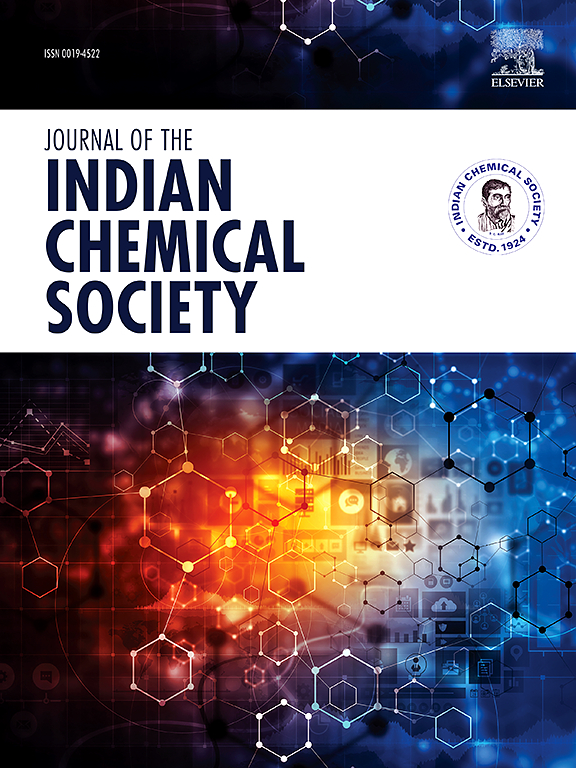Experimental and semiempirical quantum investigations of the effect of Cobalt addition on the dielectric properties of Nickle-Bentonite composite
IF 3.2
4区 化学
Q2 CHEMISTRY, MULTIDISCIPLINARY
引用次数: 0
Abstract
This paper presents the preparation and characterization of pure and metallically supported bentonite with different percentages of Co (1 % wt.) and Ni (5 % wt.). The preparation used the wet impregnation process method. The resulting composites were characterized by X-ray diffraction (XRD), and scanning electron microscopy (SEM) with energy dispersive X-ray spectroscopy (EDX) analysis. These characterizations indicated the greater metallic Co/Ni dispersion and higher specific surface area for the resulting composite. Moreover, the metallic nanoparticles in 1 %Co -5 %Ni/Bentonite have an intermediate dimension between that of 0 %Co–5 %Ni/Bentonite and 1 %Co–0 %Ni/Bentonite composites. Such intermediacy in the nanostructure of 1 %Co–5 %Ni/Bentonite may be associated with its measured dielectric properties characterized by the least permittivity and loss factor as compared to 0 %Co–5 %Ni/Bentonite and 1 %Co–0 %Ni/Bentonite. Interestingly, our semiempirical quantum calculations revealed that 1 %Co–5 %Ni/Bentonite has intermediate electrochemical properties (hardness and electronegativity) relative to those for 0 %Co–5 %Ni/Bentonite and 1 %Co–0 %Ni/Bentonite, indicating the optimal reactivity of 1 %Co–5 %Ni/Bentonite. Our results are, thus, pertinent to catalysis and other applications pursuing optimal electrochemical properties of Ni/Bentonite.

求助全文
约1分钟内获得全文
求助全文
来源期刊
CiteScore
3.50
自引率
7.70%
发文量
492
审稿时长
3-8 weeks
期刊介绍:
The Journal of the Indian Chemical Society publishes original, fundamental, theorical, experimental research work of highest quality in all areas of chemistry, biochemistry, medicinal chemistry, electrochemistry, agrochemistry, chemical engineering and technology, food chemistry, environmental chemistry, etc.

 求助内容:
求助内容: 应助结果提醒方式:
应助结果提醒方式:


